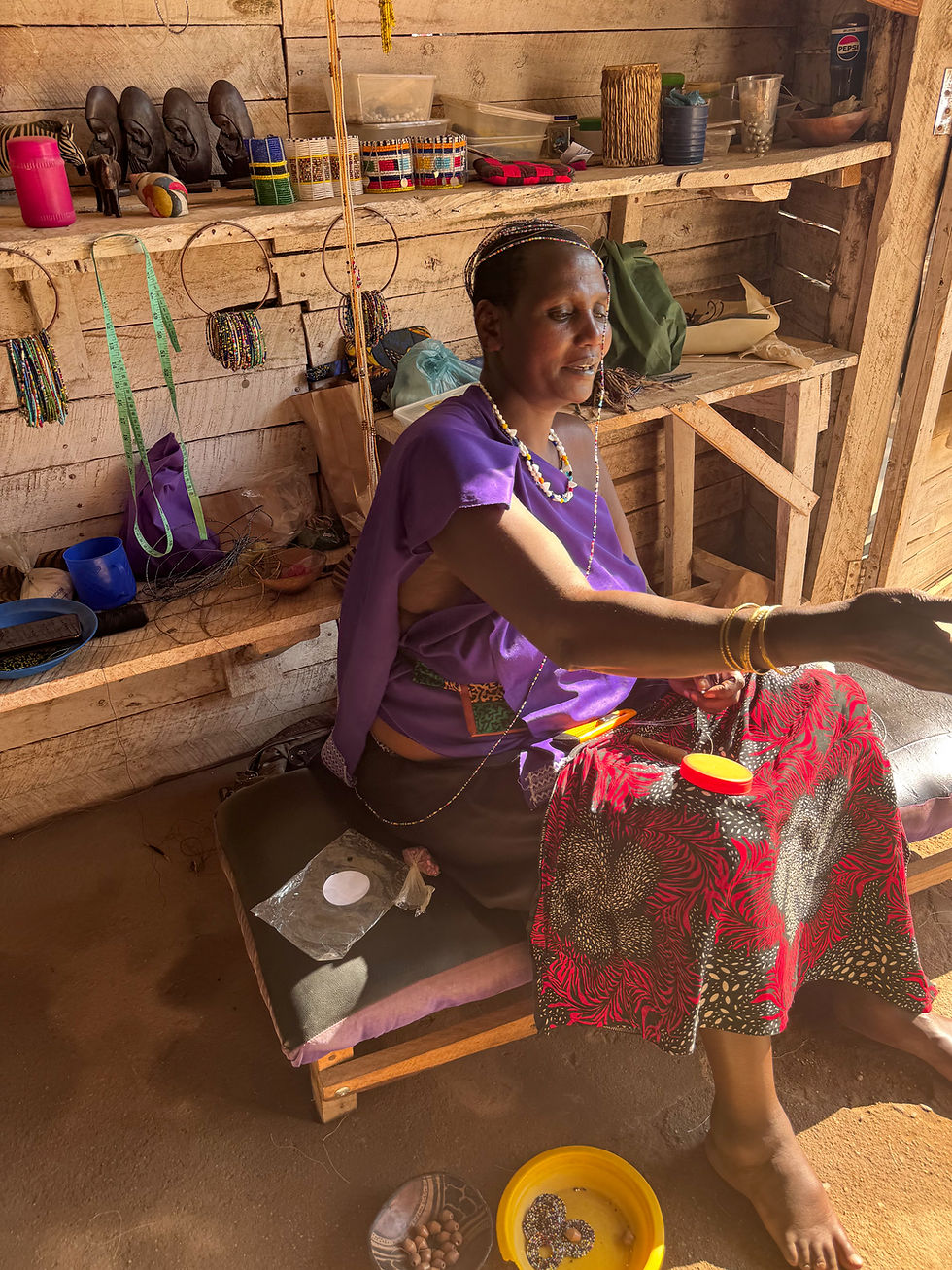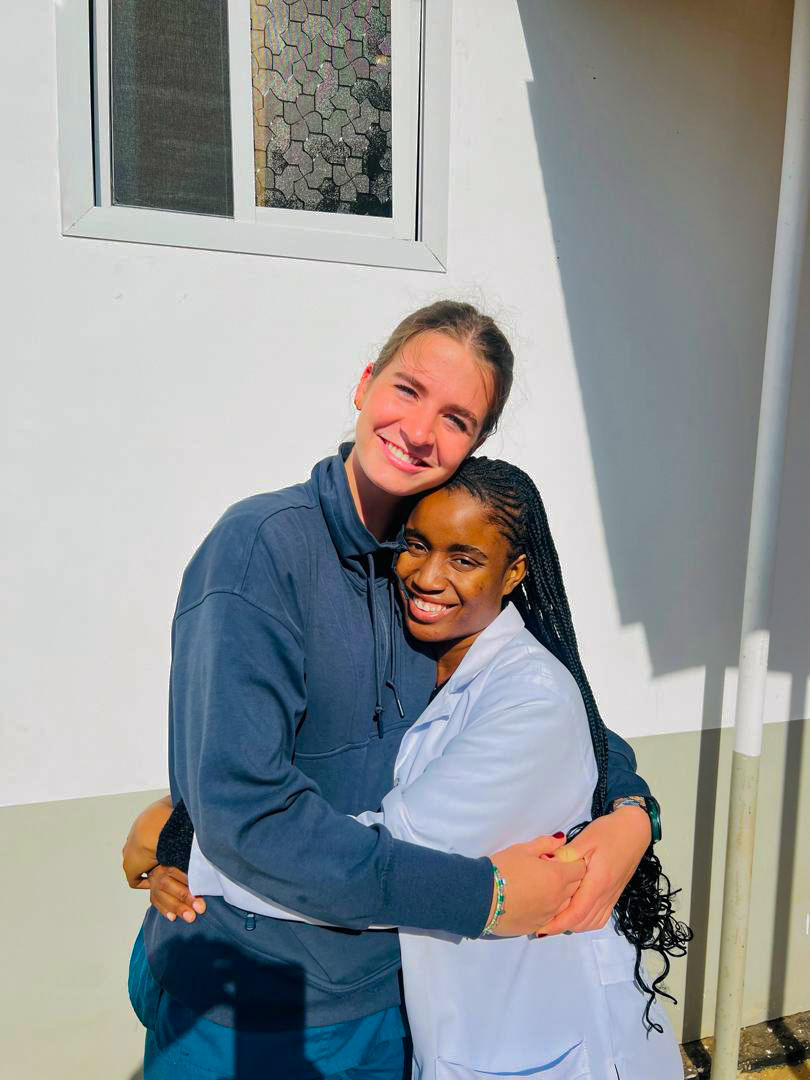Week 6
- Lucy P-BARG
- Aug 22
- 4 min read
Research Reflection:
This week on the wards was full of complicated cases that highlighted both the clinical and systemic challenges of care in Iringa. On Monday, we discharged an alcoholic patient with hypertension while another man with AIDS had five liters of ascitic fluid removed, which reminded me how crucial albumin is for clotting when such large amounts are drained. Edward’s condition continued to trouble me, as his blisters worsened and looked increasingly necrotic, raising questions about why a surgical consult was still being delayed. Tuesday was packed with teaching moments and difficult decisions. In the VIP ward, a 71-year-old man with hypertension and heart failure had stopped taking his medications, and the chief emphasized that the real problem was not the drugs themselves but the lack of education around follow-up. In the female ward, one patient’s diagnosis shifted from stroke to bacterial meningitis when imaging results conflicted, while another was thought to have parasites after worsening symptoms and inconclusive labs. Medication errors also came up—a seizure patient was underdosed due to a prescribing mistake, while another epileptic man had gone untreated simply because he did not want to walk to the pharmacy. I noticed how often heart failure was linked with anemia, something the interns told us worsens prognosis considerably. Dialysis patients also illustrated the tension between need and resource limits; one had received multiple transfusions but still could not continue treatment until her hemoglobin improved. By Thursday, Edward’s worsening condition felt emblematic of these systemic delays, as his necrotizing tissue still had not been addressed surgically. I was frustrated enough to seek out help, eventually finding Dr. Strong and pushing for a surgical consult, which we finally secured. Alongside these cases, I observed smaller but important dynamics: teaching moments about proper inhaler technique, repeated use of patients for student exams that seemed more burdensome than helpful, and cultural attitudes surfacing in offhand remarks, such as questioning whether an older patient was “too old” for advanced imaging. Altogether, this week reinforced how medicine here is never just about diagnoses and prescriptions but also about access, education, cultural values, and the persistence it takes to advocate for patients when the system moves slowly.
1) Kate and Dr. Strong reviewing our questionnaire we put out in the field 2) Cabinet I saw in the labor room 3) Pile of speculums stored in the bathroom of the female internal ward 4) Kate and Edson in the TB clinic while we help fill out forms
Cultural Reflection:
This week was full of small but powerful cultural moments that showed me more about life in Iringa. I feel like we are really getting to know what real life is like here. One of the most surprising things I observed was how common it is to pull over and grab corn as a snack while driving — something so simple, yet such a normal part of the rhythm of daily life here. We were getting a tour of the town by our friends James and Ahmed and along the way stopped for some street corn. Erick, our hostel owner and good friend, took us to street coffee one afternoon where we sat with the babus and talked politics. It was such a reminder of how public spaces here aren’t just for eating or drinking, but for debating, connecting, and being part of the community. I also noticed the gap in class system here, Erick being of a higher income says that he joins the coffee culture of the lower class to be connected to his community because otherwise he would remain isolated in his hostel.
We also got to see the Iringa Mosque being built by our friend Ahmed, a massive six-million-dollar project with pieces imported from Turkey, and talked with James outside of it. That visit stood in contrast to the bustling market, where the stalls are full of vibrant colors of fabric and food — though I learned that not long ago, a large fire tore through the old market, and people rebuilt quickly. That resilience really struck me.
There were lighter moments too — like watching the sunset in Gangilonga, laughing when our safari driver Kulwa balanced reading with driving, and spotting my “doppelganger.” On safari near Ruaha, Kate and I were nervous at first, but standing outside the park together reminded me how much growth can come from stepping into the unknown. And to end the week, we visited our friend Moshi in her shop, where she sells the fabrics he makes into clothes — a creative reminder of how culture, work, and artistry blend together here.
Overall, this week showed me the blend of tradition, resilience, and everyday joy that makes Iringa so unique.
1) A common snack to pull over and grab while driving is surprisingly, corn 2) Erick, our hostel owner and good friend, took us to street coffee one day where we sat and talked politics with the babus 3) Kate and I were very nervous 4) Iringa Mosque being built by our friend Ahmed, a 6 million dollar project 5) James outside of the mosque 6) Beautiful colors in the market 7) A large fire burned through the old market and was cleared out quickly 8) Sunset in Gangilonga 9) Kulwa, our safari driver, reading and driving 10) Me and the car! 11) My doppleganger 12) Kate and I outside Ruaha National Park, on our two day safari 13) Our friend Moshi makes fabric and sells clothes in this shop





































Comments